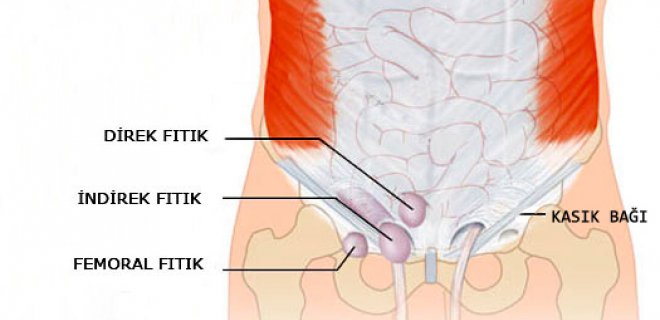What is an Inguinal Hernia?
An Inguinal Hernia is a hernia that comes out of the inguinal region. Abdominal wall hernias are the most common hernias among: about 80-90% of all hernias?creates an ini. The vast majority of these cases are in men: an inguinal hernia occurs in 1 woman against every 9 men.Inguinal hernias are divided into 3 subgroups: direct inguinal hernias, indirect inguinal hernias and femoral hernias. These three come out of 3 different points very close to each other and can be easily confused with each other during the examination, but the treatment of all three is the same. Indirect inguinal hernias are congenital, they occur as a result of the subsequent and spontaneous opening of the inguinal canal. It is more common in children and teenagers. Direct hernias come out of muscle tears, they occur with athletes, in patients of advanced age. Femoral hernias, which come out of the femoral hole, are the least common inguinal hernias and are more common in women. Femoral hernias come out one or two cm lower than the others.
Inguinal Hernia Treatment
Inguinal hernias can be repaired by the open method or by the closed method. Patchy repair performed by the open method covers the places where direct and indirect hernies03, but does not close the hole where the femoral hernia comes out. In contrast, a repair with the closed method covers all three holes from the inner side. Since femoral hernias are more common in women, it is safer to repair inguinal hernias in women by closed method all the time. A closed repair performed with the right technique not only repairs the existing hernia, but also prevents 2 other inguinal hernias that will come out of the same side in the future.Indirect hernias are the most common in inguinal hernias. Here, the place where the hernia comes out is anatomically the inguinal canal itself. This canal is the natural way in which the testicles descend from the abdomen to the bag before birth. It is expected that this place will be closed after the birth. Failure to close this canal or to reopen it after closing causes a hernia. Therefore, indirect hernias are more common in children and teenagers.
Direct hernias, on the other hand, are opened by tearing the muscle. Hernias seen in athletes and hernias seen in elderly patients are mostly direct hernias. Muscle tearing can have different causes: excessive physical exertion, sudden weight loss, chronic cough, straining and aging-related muscle weakness can be included. Femoral hernias, on the other hand, come out of the femoral canal, which is also an anatomical canal, and are seen in women. It should not be kept in mind that the hernia may be a femoral hernia in open-method hernia operations in women. Inguinal hernia may cause pain at an early stage, in addition, apart from swelling, there may be tenderness of withdrawal in the leg. As the hernia hole grows, the swelling also grows, and there may be mild pains in the form of constipation, bloating and cramping as a result of the entry of the intestines here. As a result of the hernia going down to the bags, it gets the name scrotal hernia. These hernias stick to the canal they have passed through over a long time and to the inner face of the bags, making closed surgery technically very difficult. After a certain point, the hernia hole grows well, all the small intestines fill the hernia sac: Giant hernias form.

